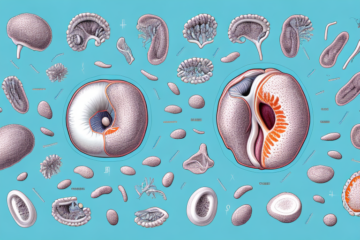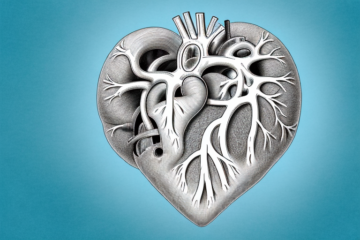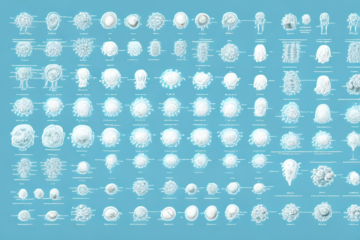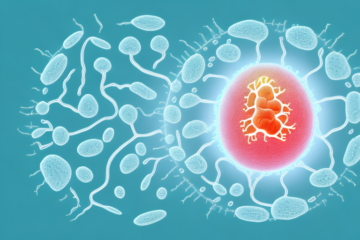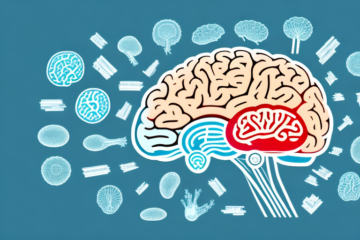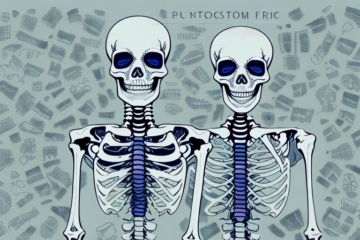When it comes to women’s health, vulvar pain is often a sensitive and taboo topic. Commonly known as vulvodynia, it is a condition characterized by chronic pain in the vulva, the external female genitalia. Vulvodynia can cause a wide range of symptoms including burning, itching, and discomfort that can significantly affect a woman’s quality of life. In this article, we will discuss the symptoms, causes, diagnosis, treatment, and prevention of vulvar pain in detail to help you understand the condition better.
Understanding Vulvar Pain: An Overview
Vulvar pain or vulvodynia is a common condition that affects millions of women worldwide. It is often characterized by chronic vulvar pain, itching, burning, and discomfort that can be severe or mild, intermittent or constant. The pain can be localized or generalized, occurring in a specific area or spreading to the entire vulva. For some women, the pain can be unbearable, leading to emotional distress, depression, and anxiety.
There are several types of vulvar pain, including provoked vestibulodynia, which is pain that occurs during sexual activity or when pressure is applied to the vulva. Another type is generalized vulvodynia, which is pain that occurs spontaneously and is not related to any specific trigger. Additionally, some women may experience mixed vulvodynia, which is a combination of both provoked and generalized pain.
The causes of vulvar pain are not fully understood, but they may include nerve damage, hormonal imbalances, muscle spasms, or chronic infections. Treatment options may include topical creams, medications, physical therapy, or surgery. It is important for women experiencing vulvar pain to seek medical attention and discuss their symptoms with a healthcare provider to determine the best course of treatment.
Types of Vulvar Pain: Nociceptive and Neuropathic Pain
There are two main types of vulvar pain: nociceptive and neuropathic pain. Nociceptive vulvar pain is caused by tissue damage, inflammation, or infection, while neuropathic pain is caused by damage or dysfunction of the nerves that supply the vulva. Neuropathic pain is more common and often more severe than nociceptive pain, and it can be challenging to treat. Understanding the type of pain you have is essential in managing your symptoms and finding the right treatment.
It is important to note that vulvar pain can also be caused by other factors such as hormonal changes, skin conditions, and muscle tension. In some cases, the cause of vulvar pain may be unknown. It is essential to consult with a healthcare provider if you experience any persistent or severe vulvar pain, as it can significantly impact your quality of life and may be a sign of an underlying medical condition.
Common Symptoms of Vulvodynia: Burning, Itching, and Discomfort
Burning, itching, and discomfort are the most common symptoms of vulvodynia. You may experience these symptoms all the time, or they could appear intermittently. They can range from mild to severe and can be triggered by various factors, such as stress, sexual activity, or sitting for long periods. In some cases, touching or pressure on the vulva can also cause pain. Understanding your symptoms and triggers is crucial to managing the condition.
Aside from the common symptoms of vulvodynia, there are other symptoms that may also occur. Some women may experience pain during urination or bowel movements, while others may have pain during or after intercourse. These symptoms can greatly affect a woman’s quality of life and may lead to anxiety or depression.
It is important to seek medical attention if you experience any of these symptoms. Your healthcare provider can help diagnose and treat vulvodynia. Treatment options may include medications, physical therapy, or nerve blocks. Additionally, practicing good hygiene and avoiding irritants can also help manage symptoms.
Understanding Causes of Vulvar Pain: Hormonal Changes and Infections
Vulvodynia has no known cause, but several factors can contribute to its development. Hormonal changes, such as those that occur during menstruation or menopause, can cause vulvar pain in some women. Infections, such as yeast or bacterial infections, can also cause vulvodynia. Other potential causes include sexual or physical trauma, nerve damage, or an overactive immune system.
It is important to note that vulvodynia can also be a symptom of other underlying medical conditions, such as endometriosis or pelvic floor dysfunction. In some cases, vulvar pain may be a side effect of certain medications or treatments, such as chemotherapy or radiation therapy. It is important to speak with a healthcare provider if you are experiencing persistent vulvar pain, as they can help determine the underlying cause and provide appropriate treatment.
Medical Conditions That Can Cause Vulvodynia: Endometriosis and Fibromyalgia
Endometriosis and fibromyalgia are two medical conditions that can cause vulvar pain. Endometriosis is a condition where the tissue that lines the uterus grows outside of the uterus. It can cause vaginal and pelvic pain, which can lead to vulvodynia in some women. Fibromyalgia is a condition where a person experiences widespread pain, fatigue, and tenderness in the muscles and soft tissues. It can cause vulvodynia in some cases as well.
Another medical condition that can cause vulvodynia is interstitial cystitis. This is a chronic bladder condition that causes pain and pressure in the bladder and pelvic area. The pain can also spread to the vulva and cause vulvodynia. Women who have a history of urinary tract infections or pelvic inflammatory disease are at a higher risk of developing interstitial cystitis.
In addition to medical conditions, certain lifestyle factors can also contribute to vulvodynia. For example, wearing tight clothing or underwear made of synthetic materials can irritate the vulva and cause pain. Using scented products such as soaps, lotions, and laundry detergents can also irritate the vulva and cause vulvodynia. It is important to identify and avoid these triggers in order to manage vulvodynia symptoms.
Non-Medical Causes of Vulvar Pain: Stress, Diet, and Lifestyle Factors
Stress, diet, and lifestyle factors can also contribute to the development of vulvar pain. Stress can cause tension and muscle spasms in the pelvic area, leading to pain. A poor diet, lack of exercise, and smoking can also exacerbate symptoms. Wearing tight-fitting clothing or using harsh soaps and detergents can also irritate the vulva and cause pain.
In addition to the aforementioned factors, hormonal changes can also play a role in vulvar pain. Fluctuations in estrogen levels during menopause or pregnancy can cause dryness and irritation in the vulva, leading to discomfort. Similarly, certain medications such as hormonal birth control can also affect estrogen levels and contribute to vulvar pain.
Another non-medical cause of vulvar pain is sexual trauma or abuse. Survivors of sexual assault or abuse may experience pain during sexual activity or even when inserting a tampon. It is important for survivors to seek support and counseling to address the emotional and physical effects of trauma.
Diagnosing Vulvodynia: Physical Examination, Lab Tests, and Imaging
Diagnosing vulvodynia can be challenging, as there is no specific test to diagnose the condition. Your doctor will perform a physical examination to check for signs of inflammation, redness, or other abnormalities. They may also perform a biopsy or culture to check for infections. Imaging tests like ultrasounds or MRI may be necessary to rule out other potential causes of vulvar pain.
It is important to note that vulvodynia can also be a symptom of other underlying conditions, such as endometriosis or pelvic floor dysfunction. Therefore, your doctor may also ask about your medical history and perform additional tests to rule out these conditions.
In addition to medical tests, your doctor may also ask about your lifestyle and any potential triggers for your vulvar pain. This can include questions about your sexual activity, hygiene habits, and use of certain products like soaps or detergents. Keeping a journal of your symptoms and potential triggers can also be helpful in identifying patterns and finding effective treatment options.
Treatment Options for Vulvar Pain: Medications, Therapies, and Lifestyle Changes
There are several treatment options available for vulvodynia, depending on the severity and type of pain you have. Medications, such as pain relievers, anticonvulsants, and antidepressants, can help reduce pain and discomfort. Therapies like physical therapy, biofeedback, and acupuncture can help relieve muscle tension and stress, which can exacerbate symptoms. Lifestyle changes like wearing loose-fitting clothing, using mild soap and detergents, and avoiding triggers can also help alleviate symptoms.
In addition to these treatment options, some women find relief through alternative therapies such as herbal supplements, yoga, and meditation. These practices can help reduce stress and promote relaxation, which can in turn reduce pain and discomfort. It is important to discuss any alternative therapies with your healthcare provider before trying them, as some may interact with medications or have potential side effects.
Alternative Approaches to Managing Vulvodynia Symptoms: Acupuncture and Herbal Remedies
Alternative approaches like acupuncture and herbal remedies can also help manage vulvodynia symptoms. Acupuncture, which involves the insertion of fine needles into specific points on the body, can help alleviate pain and reduce stress and tension. Herbal remedies like tea tree oil, lavender oil, and aloe vera can help soothe and protect the vulva and reduce inflammation.
In addition to acupuncture and herbal remedies, other alternative approaches to managing vulvodynia symptoms include physical therapy, cognitive-behavioral therapy, and dietary changes. Physical therapy can help improve pelvic floor muscle function and reduce pain. Cognitive-behavioral therapy can help address the emotional and psychological impact of vulvodynia and teach coping strategies. Dietary changes, such as avoiding trigger foods and increasing intake of anti-inflammatory foods, can also help reduce inflammation and pain.
Living with Vulvodynia: Coping Strategies and Support Groups
Living with vulvodynia can be challenging, but there are coping strategies and support groups available. Engaging in stress-reducing activities like meditation, yoga, and massage can help alleviate symptoms. Joining a support group can also provide emotional support and education about the condition.
Another coping strategy for vulvodynia is to make dietary changes. Some women have found relief by avoiding certain foods that trigger their symptoms, such as spicy foods, caffeine, and alcohol. It is also important to stay hydrated and maintain a healthy diet to support overall health.
In addition to support groups, therapy can also be helpful for managing the emotional impact of vulvodynia. A therapist can provide tools for coping with anxiety, depression, and relationship issues that may arise from living with chronic pain. It is important to seek out a therapist who is knowledgeable about vulvodynia and can provide specialized care.
Prevention Tips for Reducing the Risk of Developing Vulvar Pain
While there is no guaranteed way to prevent vulvar pain, certain lifestyle changes can reduce your risk of developing it. Avoiding harsh soaps and detergents, wearing loose-fitting clothing, practicing good hygiene, and staying hydrated can all help promote vulvar health. Maintaining a healthy diet, exercising regularly, and reducing stress can also improve overall health and reduce the risk of developing chronic pain conditions like vulvodynia.
In conclusion, vulvar pain or vulvodynia is a condition that affects millions of women worldwide. It can cause a wide range of symptoms and significantly affect a woman’s quality of life. Understanding the causes, symptoms, and treatment options for vulvodynia is essential for managing the condition and improving overall health and well-being. Talk to your healthcare provider if you experience any symptoms of vulvar pain to determine the best course of treatment for you.
Another way to reduce the risk of developing vulvar pain is to avoid using scented products in the genital area. Scented tampons, pads, and toilet paper can irritate the vulva and cause discomfort. It is also important to avoid using douches, as they can disrupt the natural balance of bacteria in the vagina and increase the risk of infection.
Additionally, practicing safe sex can help prevent sexually transmitted infections (STIs) that can cause vulvar pain. Using condoms and getting regular STI screenings can reduce the risk of developing STIs and other infections that can lead to vulvodynia.





